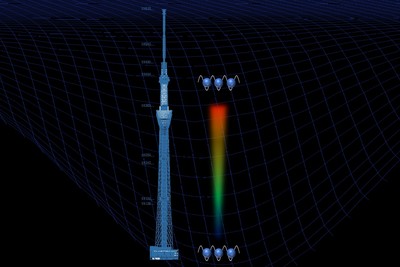PRESS RELEASE
- Research
- 2020
Test of General Relativity by a Pair of Transportable Optical Lattice Clocks
Authors
Masao Takamoto, Ichiro Ushijima, Noriaki Ohmae, Toshihiro Yahagi, Kensuke Kokado, Hisaaki Shinkai & Hidetoshi Katori
Abstract
A clock at a higher altitude ticks faster than one at a lower altitude, in accordance with Einstein’s theory of general relativity. The outstanding stability and accuracy of optical clocks, at 10−18 levels, allows height differences of a centimetre to be measured. However, such state-of-the-art clocks have been demonstrated only in well-conditioned laboratories. Here, we demonstrate an 18-digit-precision frequency comparison in a broadcasting tower, Tokyo Skytree, by developing transportable optical lattice clocks. The tower provides the clocks with adverse conditions to test the robustness and a 450 m height difference to test the gravitational redshift at (1.4 ± 9.1) × 10−5. The result improves ground-based clock comparisons by an order of magnitude and is comparable with space experiments. Our demonstration shows that optical clocks resolving centimetres are technically ready for field applications, such as monitoring spatiotemporal changes of geopotentials caused by active volcanoes or crustal deformation and for defining the geoid, which will have an immense impact on future society.

Nature Photonics : https://www.nature.com/articles/s41566-020-0619-8

